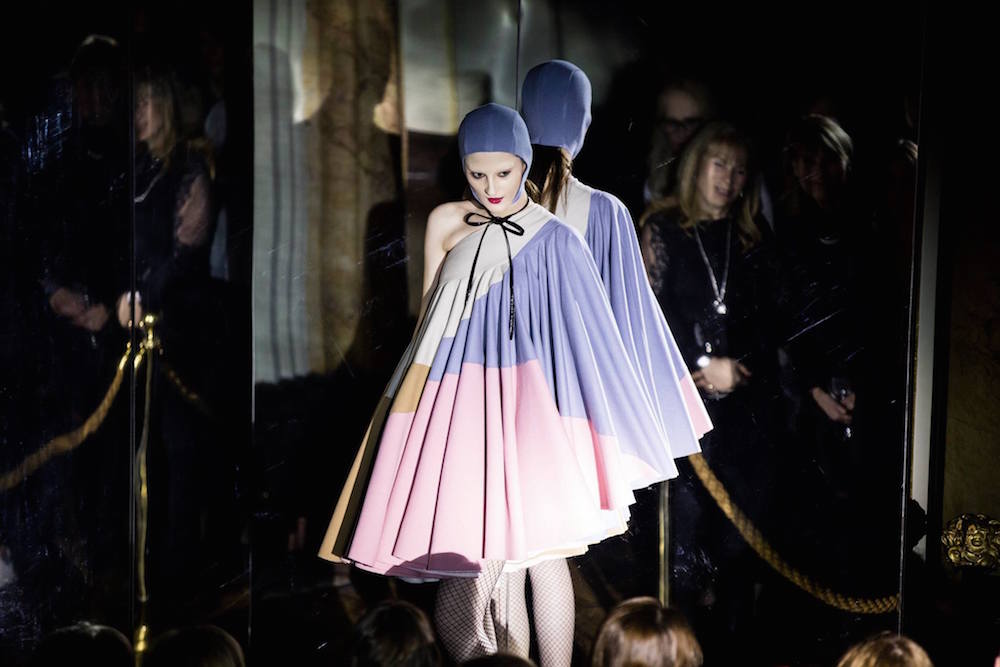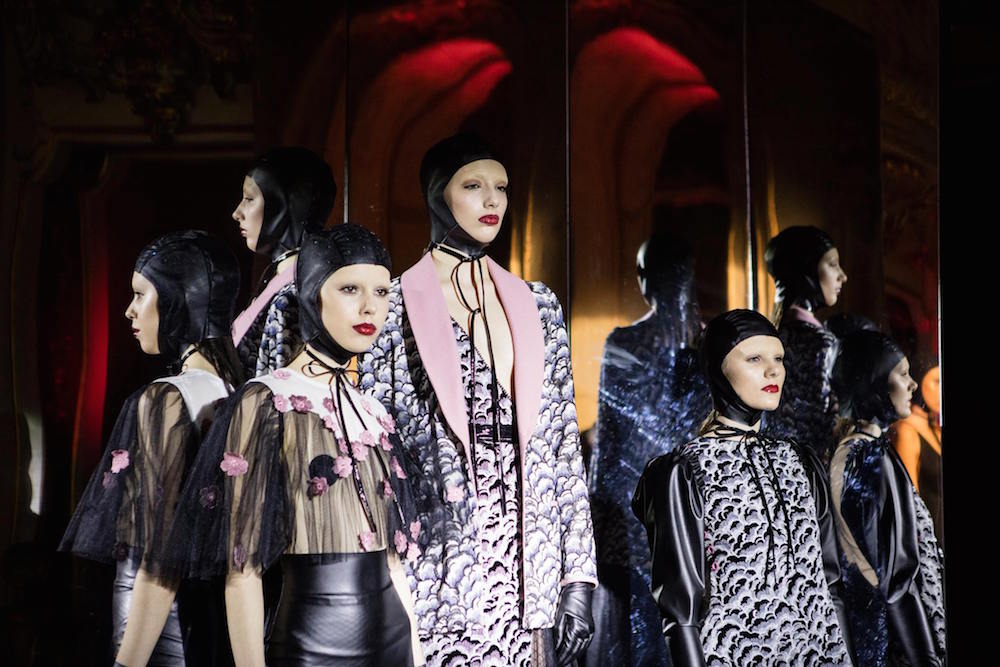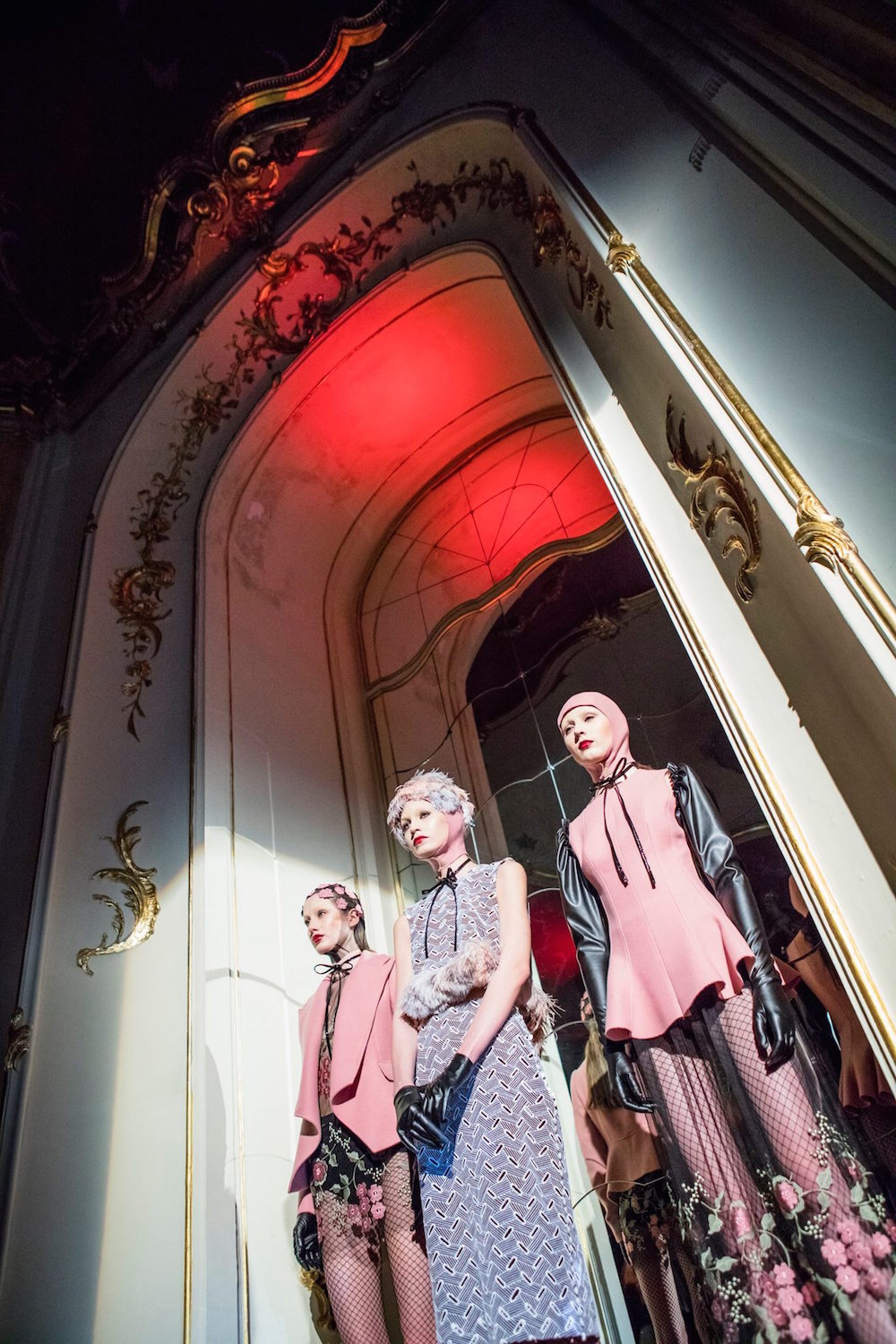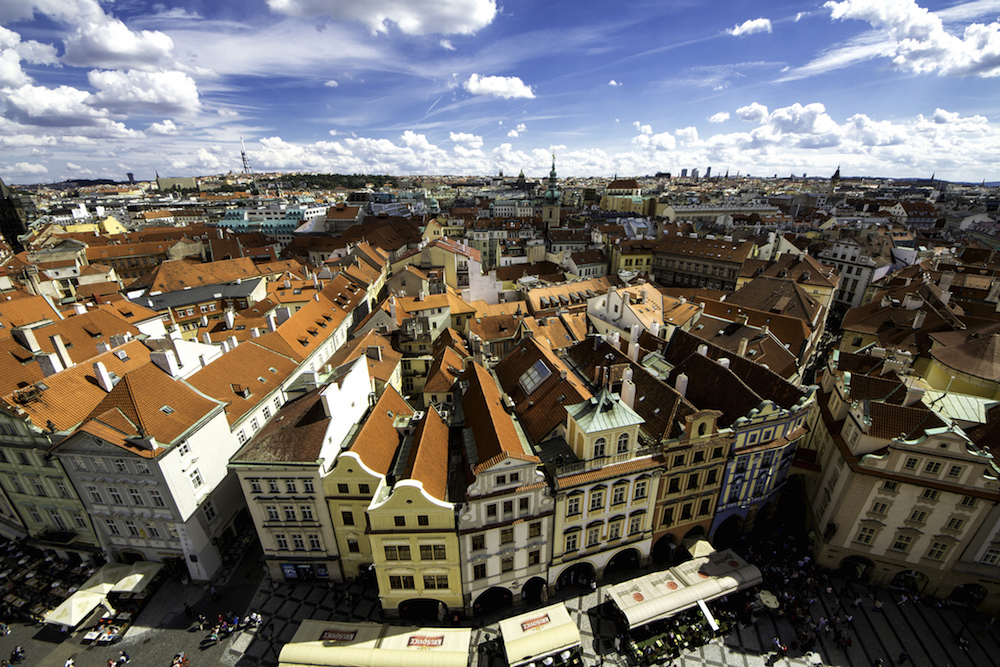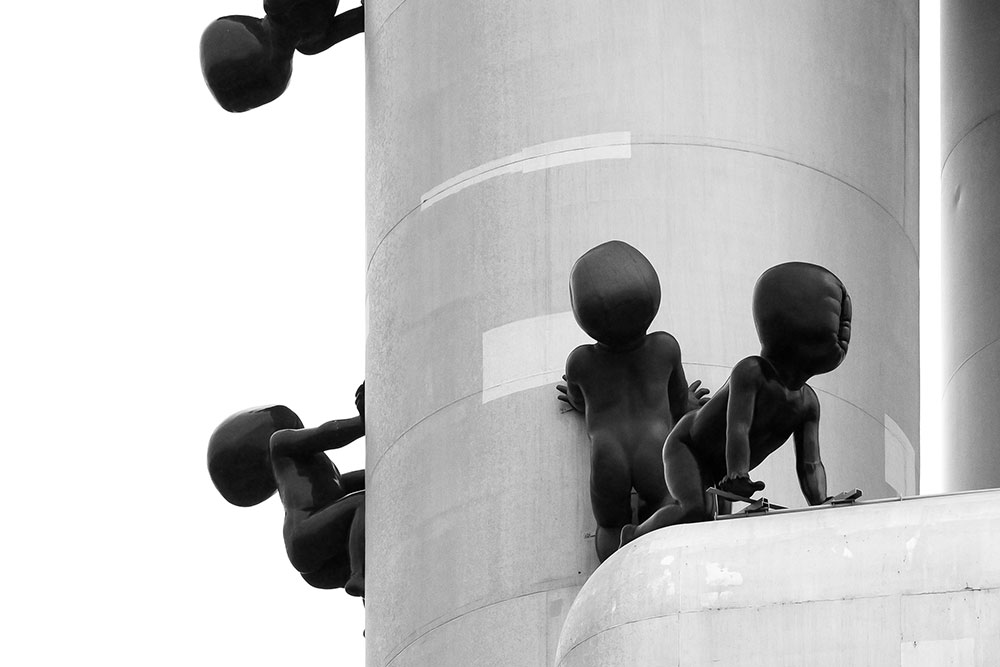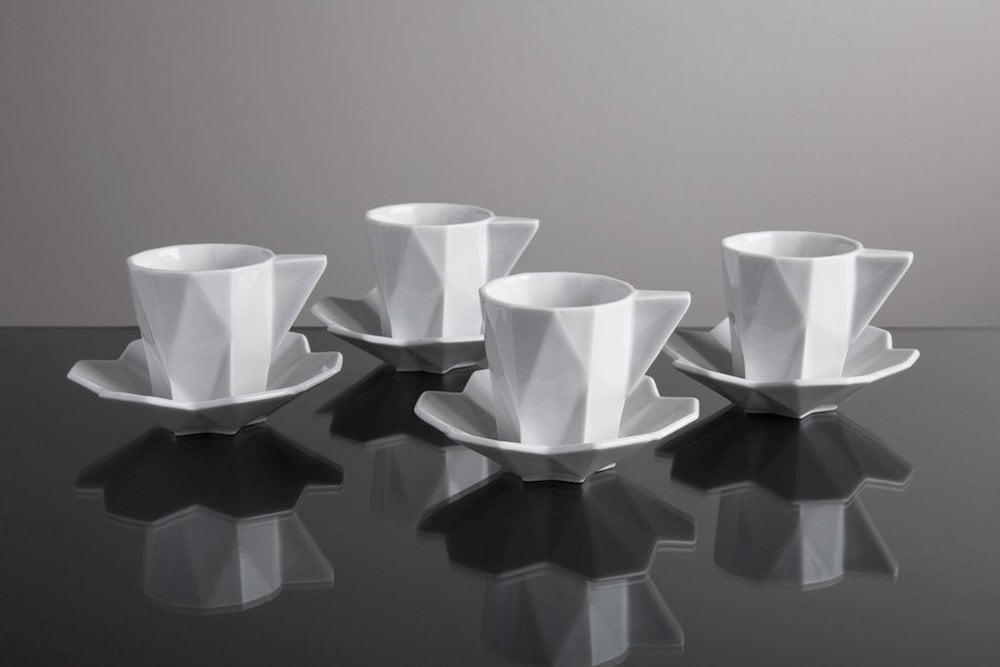Prague Fashion Week: the Czech designers putting their country on the fashion map
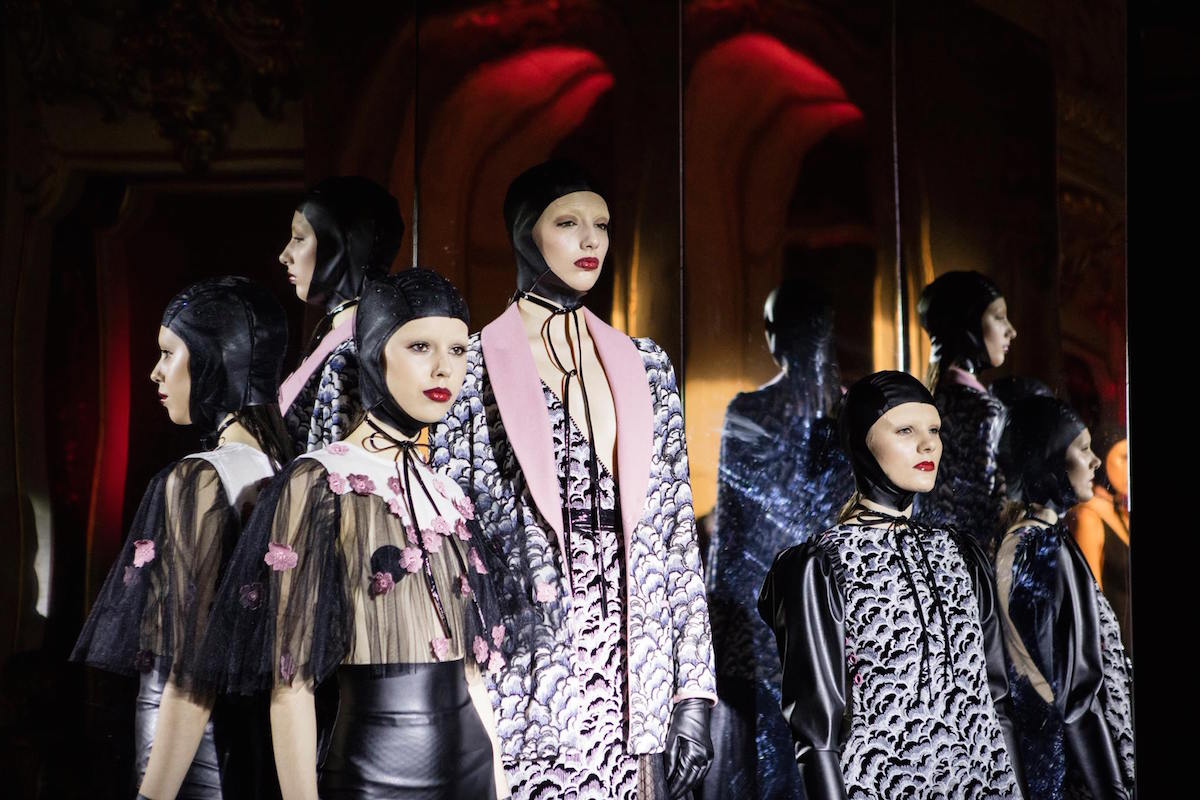
Prague might be better known as a tourist hotspot than a fashion capital. But, as Owen Vince reports from this year’s Mercedes-Benz Prague Fashion Week, the Czech Republic is bursting with designers ready to make the city a global style centre
In 1987, Czech-Canadian artist Jana Sterbak notoriously wore a dress constructed entirely of raw meat steaks, the blood running in pale channels down her body as she posed for photographers. It’s often cited as the work which inspired Lady Gaga’s own infamous carnivorous dress. For many, this slice of radical couture has been the most prominent Czech contribution to contemporary fashion design. But that is by no means the state of things in the Czech Republic today, as demonstrated by the Mercedes-Benz Prague Fashion Week, taking place annually in the historic city each September, with a host of new names pushing prominently to the surface. This year’s iteration, running from 1—8 September, promises to be no different.
Fashion Week barely scratches the surface of Czech (and by that measure, Slovak) style, yet its sheer diversity and expression of influences (as well as experiments) reveal a genuine electricity and a fascination in celebrating fashion as a source of art and inspiration. Designers such as Sabo and Laformela clearly enjoy mining their collective post-Soviet histories and avant-garde artistic experiments to produce a style which both departs from and yet continuously refers to their pre-1989 roots. While designers such as Gosha Rubchinskiy have done a lot of the heavy lifting in establishing what might be called a post-Soviet style, the work of these selected Czech designers demonstrates that the scene is not confined to experimental sportswear or nostalgia trips alone; from the refined, angular lines of Chatty to the monkish elegance of NEHERA, the Czech scene boasts a unique and diverse emergence which continues to unfold.
Gathered below are those designers who — among the host of emerging and established talents in the country — represent the current and leading wave of design activity in a landscape which rarely gets noticed next to the shining glamour of other New East fashion centres like Kiev and Tbilisi, let alone New York, Paris and London.
Miro Sabo
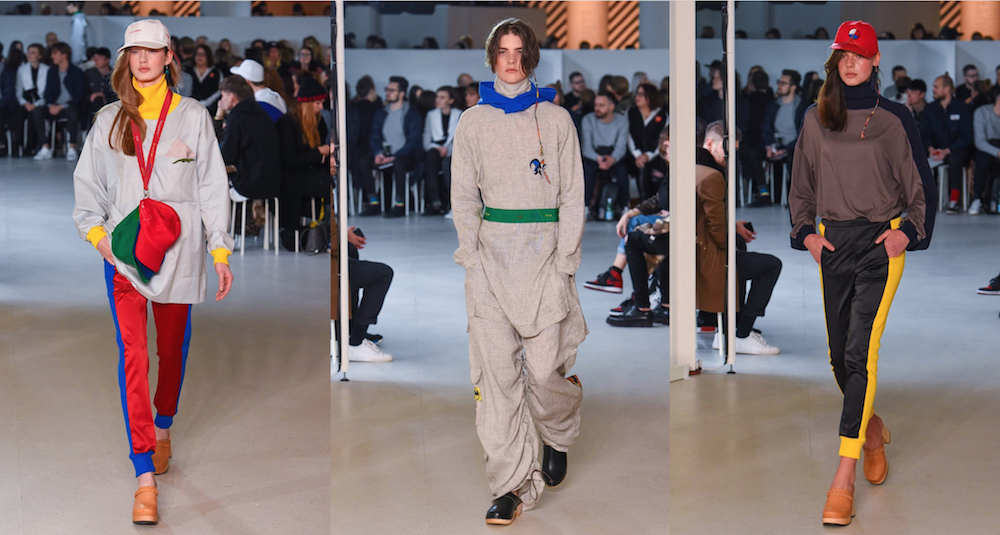
Sabo’s FW17 showing at Prague Fashion Week promises to leave a mark on the event, dominating the catwalk with a sense of powerful grandeur which verges on a kind of sartorial violence. Sabo is one of those names who regularly crops up in discussions of the Czech scene: he is young, and his work shudders with a certain uncontainable energy. I like to think that Sabo is consciously playing off the iconic status of collective sportswear in the memories of post-socialist countries, where athletes (and public gymnastic displays) have their own specific cultural resonance.
Sabo’s ath-leisurewear — executed in dove greys intercut with geometric shards of primary colour — clings to and bursts from the bodies of their models, with especially gaunt faces playing a deft line between the hardness of sport and the delicacy of the clothes being worn. It has the bullishness of Gosha Rubchinskiy’s Russified Kappa line, but also a certain dressy delicateness which lifts them away from being simply reformatted running gear. Having pocketed a Woolmark Award only recently, there’s a solid expectation that Sabo will be one of the leading lights on an increasingly international stage, especially as casual and sportswear becomes increasingly prominent on the European and global scene.
Chatty
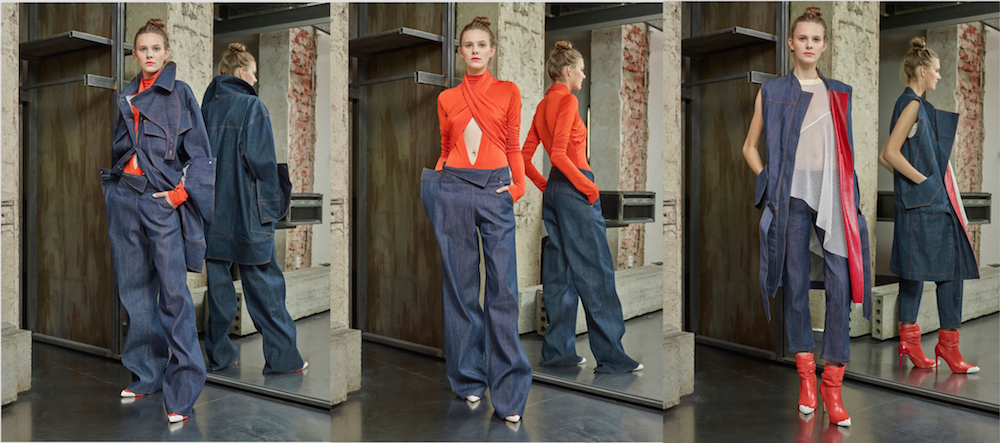
Chatty is sullen and night-lit, an explosion of boxy silhouettes and strappy bands of workman-like material. This Prague-based fashion house, in their now-iconic SS16 line, introduced a style focused on manual wear: factory clothing lifted out of its productive context and processed into crisp, pristine style. Founded in 2006, the brand has worked extensively with the likes of Vodafone and L’Oréal, to name a few. Their ready-to-wear collections make use of quality denim mixed with avant-garde styling and custom tailoring. Chatty is run by two Czech designers, Anna Tuskova and Radka Sirkova. Working with wax paint and elastane, their clothes disrupt the separation between the artistic and the practical, while also undoing the divisions between male and female couture. Like Sabo, there’s a conscious reworking of what might be considered classically Soviet styles and materials; PVC and hard-wearing factory clothing re-purposed into gauntly avant-garde styling and design.
Zuzana Kubickova
Standing in a richly upholstered drawing room, the model — head tightly bound in a blue, face-fitting bonnet — wears a rippled garment intercut with sections of colour; khaki, millennial pink, pastel blue. This look from Kubickova’s FW17 season underscores the military, peasant-infused couture which the designer has become known for: black PVC gloves against a rugged, pleated fabric, the models each with their heads wrapped in that signature bonnet. Her work has become a byword for female fashion in the Czech Republic, where she has utilised (and transformed) materials such as pearl, lace, and embroidery while retaining a hard-edged attitude. In 2011, she was credited with the Fashion Designer of the Year Award at Czech Grand Design. Her work plays a line between S&M and appropriated (traditionally masculine) elements, run through with touches of grandeur and delicacy. For me, her work is best described as a kind of cyber-Slavicism, imagining a parallel European past in which the style of the Steppe has clashed with 19th-century western male outfits and 70s details. Bell-bottomed trousers mingle with fur neck-braces and petticoats punctuated with heavy iron buttons. Her work is by far the most consistently uncompromising of the contemporary designers in the Czech Republic.
NEHERA
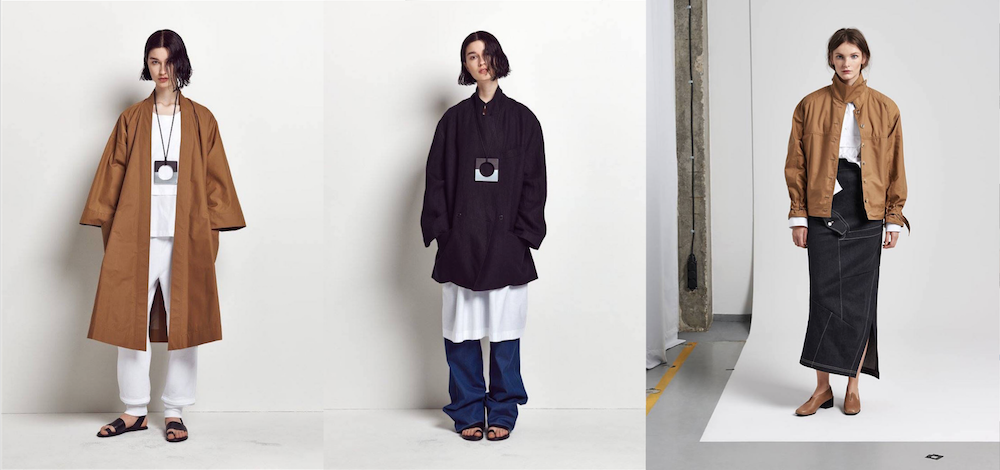
Jan Nehera originally founded this brand in 1930s Czechoslovakia, at the time running more than 130 retail stores across Europe, the US and Africa. In 2014, the brand was resurrected as NEHERA, its designs drawing on that long history and utilising the same tailoring studios and factories founded originally by Nehera himself. The garments in question speak to this combination of heritage and revival; singular silhouettes are produced using quality fabrics and an often minimalist obsession. NEHERA has been hailed as the more enigmatic and westernised beacon of contemporary Czech fashion design. For FW17, NEHERA prepared khaki and camel-hair fabrics in wide, sweeping silhouettes, pin-striped safari clothes jostling for space with looks dragged right out of desert warfare.
Particularly striking has been NEHERA’s use of cream-coloured, flat-fitting aprons — looks which share a certain industrialism with the likes of Chatty. Here, however, the emphasis seems to be monkish rather than strictly industrial. It would be too simple to talk of a defined “eastern bloc aesthetics”. NEHERA — like Sabo and Chatty — digs into its collective past, but also finds ways to transcend it.
Laformela
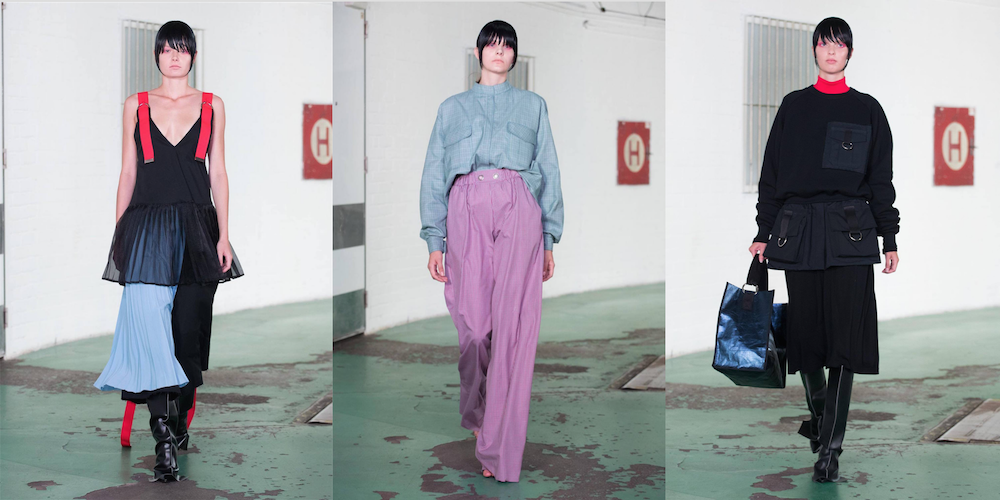
Technical details abound in the designs of Laformela, a creative collective who use seat belts wrapped around their coats to hang their fabrics as if they were a kind of bag. There is definitely something populist and historic in Laformela’s designs, where their FW17 season presents vibrant colours in a form of “authentic nostalgia” for the trends of 1989 rather than 2017. The brand is perhaps the one most closely fascinated with sub-cultures, sports and music, its looks making strong use of zips, elastane and text to produce a look which sits somewhere between the sports field and the dance club.
Jan Cerny
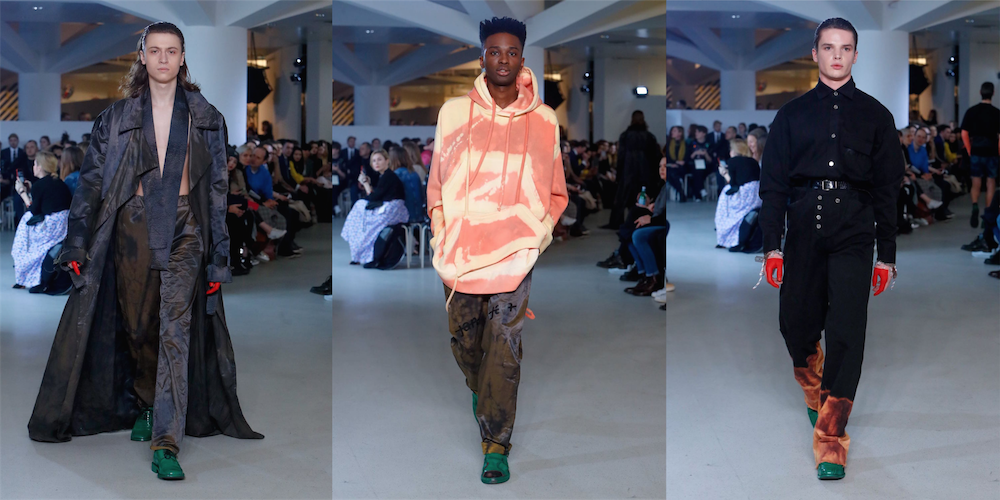
Jan Cerny’s FW17 catalogue promises to provide one of the most striking looks of Fashion Week: a male model wearing a complex and cascading blue-black cape, his velvet and plastic scarf overlapping his lower belly in angular folds. There is something decidedly futuristic about Cerny’s collection and his influences, and you’re not sure whether you’re looking at the post-apocalypse or a distant utopia.
Cerny has also made waves in his ready-to-wear collections — washed-out rhubarb and custard hoodies coupled with military style jackets (set above cherry red shirts) speak of a playful dialogue with the Czech Republic’s own militarised past. Critics have spoken approvingly of the sexual undertones of Cerny’s work, of references to male prostitution and easy money in 90s Prague. Broken lines and shuddering silhouettes reflect the disjuncture involved in adapting to post-Soviet history, traditionalism confronting sex, drugs and dubious clubs. Reassembled jeans and tattered jackets speak to the fraught and often disarticulated transformation which took place across the nation after 1989. The complicated westernism of Cerny’s work has been one of the main reasons for his popularity beyond the Czech Republic, demonstrating his uncompromising attitude to creating not simply materials, but experiences.
Jakub Polanka
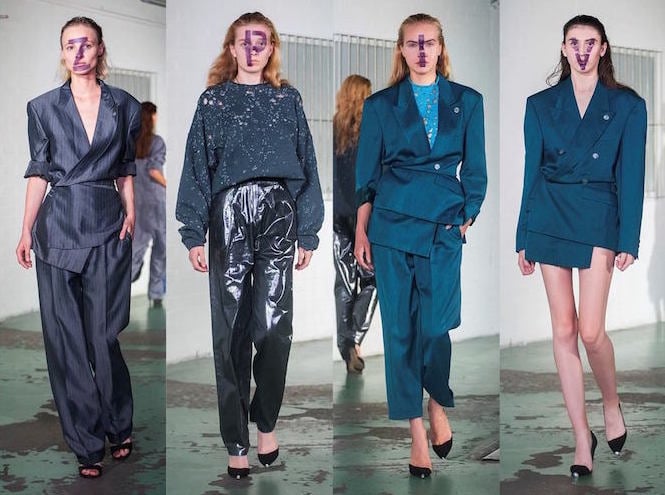
Polanka’s garments are set apart by their decidedly grungy vibe: maxi trench coats and palazzo pants are combined with oversized sweatshirt dresses using cinched crinolines and rubber bustiers. We see again the kind of exaggerated shoulders which have been appearing across the scene, big shapes toying with layered looks. Holed and vibrantly coloured fabrics create a sense of dynamic physicality.
Polanka — like Laformela and Sabo — offers up a street style which is at once playful and hard. Gangs, youth culture and punk push through the more refined and minimal looks we so often expect of high fashion, in an effort, no doubt, to shock and disrupt.
Mercedes-Benz Prague Fashion Week runs from 1—8 September at various venues. Find out more here.
